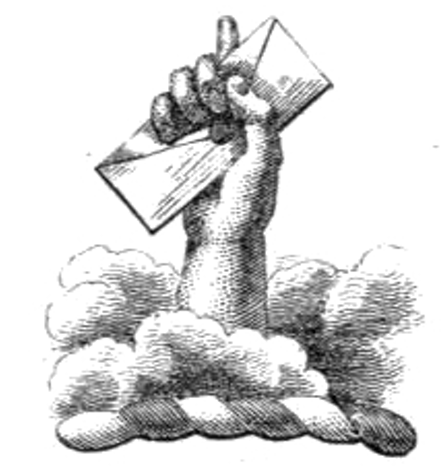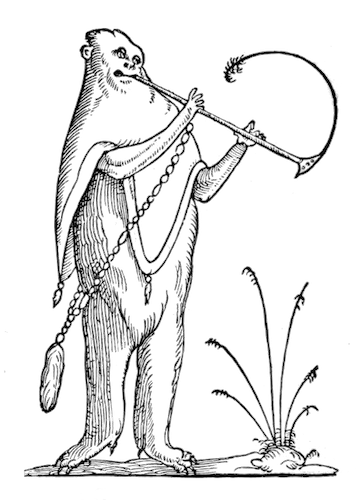
The Adventures and Experiences of the First Slovak Novel
Partially banned upon publication and translated into English for the first time this year, René, or: A Young Man’s Adventures and Experiences (1783–85) found new readers in the communist era thanks to its critiques of feudalism, capitalism, and the Catholic Church. Dobrota Pucherová introduces us to this hybrid work, which mixes the bildungsroman with the philosophical novel, the romance, the adventure story, the travelogue, the history book, and the orientalist fantasy.
October 8, 2025
Peter Michal Bohúň, Slovaks from Upper Orava, ca. 1847 — Source.
“Not all herein is fictional, or pure fantasy, nor, dear reader, will you find here an arbitrarily contrived morality existing solely in the mind of the author”, writes Jozef Ignác Bajza in the Foreword to René, or: A Young Man’s Adventures and Experiences (René mláďenca príhodi a skúsenosťi), published at his own expense in Pressburg, Upper Hungary, in 1783–85.1 Considered the first Slovak novel, it is also the first novel in a minor language published within the Habsburg monarchy. In the wider Central European context, René was preceded only by novels in German and Polish, both large and much more developed languages. If the novel is a quintessentially modern genre, associated with the rise of the middle class, capitalism, the growth of the public sphere, individual freedom, and national movements and literacy, then the appearance of René in 1783 is almost an anomaly.
Eighteenth-century Hungary was a feudal kingdom with a non-existent bourgeoisie, where Latin and German were the dominant languages of state administration, print media, and learning, and literacy was the privilege of the aristocracy and clergy. Slovak literary culture was paltry even in comparison with other small vernacular languages such as Czech or Hungarian, a fact lamented by Bajza in the Foreword: “We are indebted for this blight to the indolence of our forebears, who . . . failed to cultivate and enhance . . . their mother tongue, which is the last among languages and has suffered through no fault of its own, but of ours”.2 Fluent in German, Hungarian, Latin, Czech, and probably French, Bajza wrote the novel in Slovak to promote the idea of the Slovaks comprising a modern European nation with its own history, identity, and language. His protagonist, René, “the reborn”, stands in for Bajza’s idea of a sociocultural revival and moral regeneration of his society.
Born into a Slovak yeoman family, Bajza (ca. 1754–1836) was a Reformed Catholic who studied theology at the provincial University of Trnava, then Hungary’s only university, and subsequently at the Collegium Pazmanianum in Vienna. There, he embraced the ideas of a “Catholic Enlightenment” promoted by Maria Theresa and her son Joseph II, which aimed to use reason and the newest achievements of philosophy and science to defend the essential dogmas of Catholic Christianity, and to uphold the authority of the monarch. Ordained in Vienna’s St. Stephen’s Cathedral in 1780, he subsequently took up a position as a parish priest in Upper Hungary, where he mostly remained for the rest of his life. Forward-thinking, idealistic, and stubborn, he saw himself as the “awakener” of the Slovaks.
Friedrich Bernhard Werner, Trnava, ca. 1750–78 — Source.
Paul de la Feuille’s 1747 reissue of his father Daniel’s 1706 New Map of the Kingdom of Hungary with Its Fortresses — Source.
Upper Hungary’s biggest urban centre, Pressburg/Poszony/Prešporok (today’s Bratislava), had 30,000 inhabitants, of which ethnic Slovaks were a small minority, outnumbered by Germans and Hungarians. Even though Bratislava lies only sixty kilometres (forty miles) east of Vienna — one day by mail coach in his time, or a few hours by boat along the Danube — Bajza’s efforts to spread Enlightenment among his people were met with provincial prejudice, closed-mindedness, and open hostility. All his life, he struggled against provincial censors who considered his works too incendiary; were it not for his ingenuity and wilfulness, his novel would have never been published at all.
The novel’s familiar landscape, echoing Voltaire, Montesquieu, Wieland, Krasicki, and Johnson, has it all: a young man traveling with his companion in exotic lands, falling into love and danger, triumphs thanks to his reason and embarks on a second journey, this time to the land of Bajza’s readers, where he comments on social ills with wit and wisdom and proposes improvements. The familiar trope of travel, which unites both books of René, is a convenient vehicle for social commentary and the promotion of learning, charting the protagonist’s intellectual and moral education through time and space. At the same time, the book documents the particular challenges faced by a Central European Enlightenment intellectual, opening a window into the process of self-definition by smaller European nations.
A generically hybrid work, the novel mixes the bildungsroman with the philosophical novel, the romance, the adventure story, the travelogue, the history book, and the orientalist fantasy. It is testimony to the burden of the multiple functions that the novel was made to bear in a less developed literary culture, compensating for the scarcity of Slovak books with its didactic, social-critical, historical, political, linguistic, and philosophical ambitions. Action often gives way to lessons in useful knowledge for the benefit of the reader. Bajza’s narrator loses no opportunity to enlighten us about the nature of crocodiles or Islam, explain the use of various medicinal herbs, offer his opinion on such diverse topics as productive farming, the Slovak language, or arranged marriage, or provide historical lessons about the Slovaks and the ancient Egyptians, borrowing the latter from Herodotus.
Title and first page of the first book of René, or: A Young Man’s Adventures and Experiences (René mláďenca príhodi a skúsenosťi, 1783) — Source.
Bajza’s passionate interest in knowledge of all kinds is projected into his protagonist, a young Venetian, who is driven abroad by a desire for experience so that he can choose his calling wisely. The novel’s epigraph, borrowed from William Darrell’s popular conduct book, A Gentleman Instructed in the Conduct of a Virtuous and Happy Life (1704), which Bajza read in a widely disseminated Hungarian translation, is explicit about the work’s intention to train young men in using their minds:
Any young man may acquire as many as a thousand ways in which he might, abroad, in foreign parts, polish his mind and enrich his ingenuity and memory through diverse matters of interest, and give his conduct an extra pleasing civility.3
René and his companion Van Stiphout are curious anthropologists studying the practices of various societies. Their interrogation of social customs, class systems, religion, and ecclesiastical authority reflects Bajza’s belief in the power of critical examination to better the world. How should society be organised to benefit all? Is there only one authentic way to express devotion to God? Should parents decide about their children’s marriage partner or profession? Are reading and writing only for the select few or for everyone?
Bajza’s critical perspective is unavoidably limited by his time, as becomes clear when we follow René and Van Stiphout among the “backward heathens” (to Lebanon and Egypt) in Book I.4 Making his protagonists Venetian rather than Slovak has a clear aim: Venice is here the imagined centre of European culture, and René and Van Stiphout’s journey from Venice to the Middle East measures the distance between “civilisation” and “barbarity”. This contrast would have been much more difficult to achieve with Slovak protagonists, since the Slovaks, as the local cicerone in Book II explains to René, are not sure who they are and where they came from. This narrative displacement is testimony to the specific challenges of a Central European Enlightenment intellectual, alienated from his own stagnant culture which he wishes to modernise, his gaze steadily oriented toward the West. By identifying with René’s point of view, Bajza implicitly sets up the European civilizational space as a Slovak aspiration. In this sense, Bajza is as Eurocentric and ethnocentric as his French, German, English, or Polish contemporaries, and his novel typical of the European Enlightenment tradition. The story’s orientalist inspirations echo Voltaire’s Zadig and Mozart’s Die Entführung aus dem Serail as well as Ignác Mészáros’ Kartigám (1772), a Hungarian adaptation of a French novel via a German translation (Der schönen Türkin wundersame Lebens- und Liebes Geschichte, 1723, by a certain Menander), but also a host of Central European narratives about the Orient and Ottoman invasions — travelogues, captivity narratives, folk epics, and legends.
True to the tradition, René rescues his abducted twin sister from the harem, exchanges many love letters with an “oriental” maiden before he saves her from execution thanks to his scientific knowledge, is himself shipwrecked, falls into captivity, and escapes forced conversion to Islam — while also taking the time to pop into the ancient ruins of Memphis and admire its former glory with the appreciation of a true archaeologist and orientalist scholar. The Orient serves as a ploy both to confirm the superiority of European culture, whose moral principles and scientific thinking triumph over the supposed prejudices and superstitions of Islam, and to simultaneously offer coded criticism of Bajza’s own society. When Bajza writes of Muslims’ belief in fake miracles, he adds: “But this should come as no surprise, for I would remind you, dear reader, that our land has examples of its own, quite similar gullibility.”5 In Egypt, the travellers observe what they describe as the Muslims’ treachery, cruelty, sexual immorality, and “innate stupidity”, the last one being again Bajza’s coded reference to the Slovak society: “They have no opera houses, no theatres and anyone embarking on anything of the kind can count himself lucky if he’s sent packing with an empty purse and physically unscathed. They put all such things that exceed their comprehension down to witchcraft and diabolism.”6
An Egyptian Ball, at Ned Sili, engraving by Thomas Milton after Luigi Mayer, from Views in Egypt (1801) — Source.
Book II tells of René’s travels in “places that were less perfidious and less dangerous” (Northern Italy, Austria, and Upper Hungary).7 Like Montesquieu in Persian Letters (1721), Bajza uses the narrative ploy of delivering criticism of his own society through the eyes of a foreigner, which often creates space for irony and wit. René is perplexed by almost everything he encounters in Habsburg lands, including the wealth and corruption of monasteries, the forcing of young people into monastic life, or the use of Latin, incomprehensible to most, for mass. In Upper Hungary, René and Van Stiphout witness further social ills: illiteracy, ignorance, serfdom, usury, superstition, drunkenness, quack doctors, the exploitation of the peasants by landed gentry, mendicant orders, and the clergy, and so on. They are joined by a guide, who tells them of local aristocrats mimicking foreign lifestyles, “their wives’ clothes, the headdresses, capes, lacy skirts and all the other stuff that they don’t even have names for in their own tongue! . . . A gentleman would be ashamed to wear anything not made of the finest holland, though . . . he might well purchase and wear things woven from his own wool.”8 When the travellers are puzzled to see a man pummel another, who puts up no resistance, they miss that the aggressor pretends to be Hungarian (sporting Hungarian-style whiskers and speaking a mixture of Hungarian and Slovak) in order to claim social superiority. This is Bajza’s criticism of the Slovaks’ self-colonization — their belief that class progress involves becoming Hungarian:
two men, apparently social equals, being dressed alike — both wearing a smock, homespun trousers and a hempen shirt, both barefoot and hatless and with no great difference between them except that one had whiskers twisted back up to his ears and was cursing and swearing in a hotchpotch of languages, as he lashed out at the other, battering him mercilessly, the other, perhaps lacking the time or money for a shave over the past three weeks, endured the beating, crying only for God and all the saints to have mercy upon him.9
In spite of his ideas about social justice, Bajza perceived the French Enlightenment as too radical, fearing that it threatened religious faith, and therefore morality and social order, and did not advocate any radical alternative to the confessional state or the monarchy. Rather, he wanted a reform of the Catholic Church to reflect new ideas about individual freedom, faith, and social justice. His criticism of the forced celibacy of Catholic clergy is a case in point. Bajza considered celibacy a “state against nature” and hoped Joseph II would abolish it. He apparently sublimated his sexual frustration into frantic intellectual activity that made him both extremely productive and passionately defiant, known for getting into arguments and fistfights with landowners or their magistrates. A practical man, he financed his publications with proceeds from the parish lands, setting his farm as an example of productive farming.
Lithograph of traditional peasant costumes from Romania (left), Hungary, Slovakia, and Germany (right), from Gabriel de Pronay, Esquisses de la Vie Populaire en Hongroie (Sketches of Popular Life in Hungary, 1855) — Source.
Preoccupied with the need to “uplift” his Slovak compatriots intellectually, socially, and spiritually, Bajza saw literacy as a prerequisite for social justice and civil society. Memorably, he helped his parishioners compose a letter of complaint about their landowner, Baron Imrich Perényi, claiming that it was his Christian, but especially his pastoral, obligation to defend his parishioners against injustice. Even though he did not envision the peasants as participants in political life, he believed all classes should actively participate in social life and therefore be educated. In René, he describes the insufficiency of Slovak books as the key reason why the Slovaks are unaware of their history and identity:
“Good,” Van Stiphout replied, “but just who are these people? Slovenic, Slavonic? I’ve heard and read quite a lot about this country so I know that all manner of people live here, speaking all sorts of languages, mostly Hungarians, who gave the land its name, of course, then Slovaks and Germans. But it’s hard to find much about the Slovaks in books, especially older works. These people don’t have and haven’t had any writings that speak of their origins and language. We did manage to come by one slim little work from which we could learn at least something to meet our travel needs, . . . and at least know how to ask for a slice of bread.”
“Indeed so,” said their travelling companion, “these people don’t have and truly never have had any books worthy of the name. A few prayer books for men or women, some almanacs and a handful of songs, which the printers always intimate to be new since there’s no knowing when they first saw the light of day. That’s all that the printers’ bookshops have to offer. Whatever may have caused this nation so to scorn the pen, heaven only knows. . . The Slovaks themselves often have so little regard for books written in their language that they often refuse to handle them even when given them as presents. And, when someone seeks to publish something, they tend to say: ‘Why go to all that trouble, why bother, when our people have survived for centuries without such things?’”10
Very much like Johann Gottfried Herder, who believed that “a poet is the creator of the nation around him”, Bajza was a proponent of the romantic idea of the nation as based on a common mother tongue, books, and literacy.11 And like Samuel Johnson, who in 1755 created an authoritative dictionary of Standard English, Bajza knew that “the chief glory of every people arises from its authours” and that language standardisation is key.12 In his Foreword to René, he laments the “Babylonian” fragmentation of the Slovak language. He was concerned that the Slovak language be raised to the status of a literary language suitable for elevated genres, “so that the Slovak nation can . . . have its own books, instead of only borrowed foreign books”. In the absence of standardised Slovak, Bajza created his own idiolect as the first known proposal for codification, a version that was rejected by his successors as too indebted to Latin syntax and Czech vocabulary.
Title page of Slovak linguist Anton Bernolák’s Grammatica Slavica (1790), a foundational work in Slavic grammar (left). Four years later, Jozef Ignác Bajza would finally publish Slovenské dvojnásobné epigramatá (Slovak double epigrams), which was completed in 1782 but banned by censors and publicly criticised by Bernolák — Source.
Bajza’s entire life is testimony to his determination to develop a national Slovak literature that would put the Slovaks on a par with other Europeans, and his struggle against provincial censorship. His first literary work was a book of 300 epigrams, written in syllabic verse, inspired by Horace, Martial, and especially John Owen (1564–1622). As the work of an ardent Josephinist, Bajza’s epigrams satirise bad priests, corruption in the Catholic Church, state bureaucracy, the decadent life of the nobility, and joke about marriage, love, friendship, and death in a style that was already common in other European languages. The local Slovak censor blocked it, describing it as “shocking and pernicious, . . . ambiguous, obscene, offensive to pious ears, sly, possibly heretical”, clearly believing that the Slovak readership was not morally and intellectually prepared for these often subversive epigrams.13
With Book I of René, Bajza wisely avoided the Slovak censor and took the manuscript directly to the imperial Habsburg censorship bureau in Vienna, where he received a stamp of approval and had the book promptly printed by a German printer in Bratislava. Clearly, for the Viennese censor, the novel was a quaint, harmless work, written in a style that was already outdated. Unlike Voltaire’s Candide, which was banned in Austria until 1798, René never satirises the pope or the sovereign, adores Joseph II, and does not represent sexual immorality or graphic violence in the name of Catholicism.
However, the novel deeply troubled the Slovak ecclesiastical authorities, especially its descriptions of passionate love, its secular spirit, and its questioning of the compulsory celibacy of Roman Catholic clergy. In 1785, Bajza received the endorsement of the Habsburg central censorship bureau for Book II of René. The printing in Bratislava was interrupted by Vicar-General Nagy, Bajza’s direct superior, who confiscated the printed copies, had the work independently reviewed, and placed it before a consistorial assembly, which decided that the novel was “in many places offensive” and should never see the light of day.14
This meant that Book II was never fully printed, while the manuscript was lost in the fire that also consumed Bajza’s library. Luckily, the existing eighteen chapters of Book II give us enough material for appraisal, but we can only conjecture how Bajza concluded his novel and which profession René chose. In 1828, Bajza became a canon in Bratislava, where he died in 1836, at the age of eighty-one. He left behind a considerable fortune of over six thousand florins, which he divided in his will among his servants, family, members of the arch-diocese, his own parish church members, as well as charity.
Eduard Gurk’s 1825 aquatint of the arrival of the coronation procession for Caroline Augusta of Bavaria at St. Martin’s Cathedral in Bratislava, the churchyard where Bajza was buried — Source.
While his successors acknowledged his pioneering work in Slovak literary life, they failed to appreciate the significance of René. The onset of the Romantic movement and later Realism meant that the novel fell into obscurity and did not attract the interest of scholars until after the Second World War. The novel’s rediscovery in 1948 — the year of the communist coup d’etat in Czechoslovakia — can be ascribed to the needs of a new era. For the communist regime, René was ideologically a highly suitable work: it could be read productively as a criticism of feudalism, capitalism, and the Catholic Church all at once. Communist criticism also appreciated the novel’s attempt to raise literary art above the popular baroque genres (seen as “bourgeois entertainment”) to the level of national literature.
In the 1980s, it was the basis of several postmodern adaptations, most notably the black comedy “Our friend René” (Náš priateľ René, 1980) by the comic duo Milan Lasica and Július Satinský. In this version, René is killed and mummified by the Egyptians; all that remains of his body is a brain, preserved in spirit, which Van Stiphout and René’s father Don Varlet bring back to Slovakia: “We carry [René’s brain] with us everywhere as evidence of his revolutionary ideas. Here in this grey matter originated the inventions that he had no time to bring to fruition: the submarine, the parachute and the spare tyre.” The play’s preoccupation with Bajza’s progressive mind, his experience with censorship, but especially its references to the insularity, bigotry, and small-mindedness of the Slovaks proved to be too provocative for the communist regime. In a twist of historical irony, “Our friend René” was banned before the opening night in 1980 and had to wait until the fall of the communist regime to be staged. In 2024, the play was revived to great acclaim by a new generation of theatre makers in Bratislava.
This is only one example of how Bajza continues to be a central cultural reference for the Slovaks in the twenty-first century, reflecting ongoing discussions in Slovakia about the Slovak national character and identity. As the first Slovak novel that set itself the task of national self-fashioning at a time when a Slovak nation and national language did not yet exist, René sheds light on the variations of the Enlightenment bildungsroman in minor European languages. It shows that the rise of the novel in Europe was a contingent and discontinuous process, much more varied than the Anglocentric perspective would have it, and suggests directions toward a more inclusive history of the European novel.
Dobrota Pucherová is Senior Researcher at the Institute of World Literature, Slovak Academy of Sciences in Bratislava, and Lecturer in Comparative Literature at the University of Vienna. She earned her D.Phil. in English from the University of Oxford. She is the co-editor, with Erika Brtáňová, of René, or: A Young Man’s Adventures and Experiences, translated by David Short (Liverpool University Press, 2025).
Enjoyed this piece? We need your help to keep publishing.
The PDR is a non-profit project kept alive by reader donations – no ads, no paywalls, just the generosity of our community. It’s a really exciting model, but we need your help to keep it thriving. Visit our support page to become a Friend and receive our themed postcard packs. Or give a one-off donation. Already a supporter? A huge thank you for making all this possible.









_Romania_Hungary_Slovakia_and_Germany_from_Esq_-_(MeisterDrucke-197612)-edit.jpg?width=1200&height=850)







